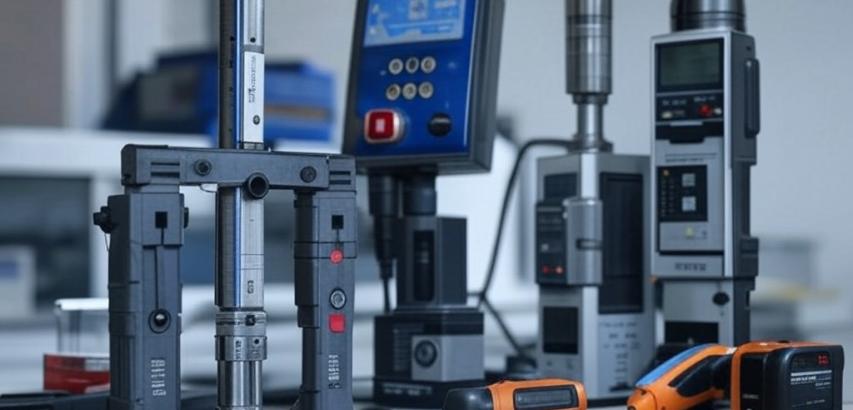Cables are the backbone of modern infrastructure, used in various applications such as electrical systems, telecommunications, transportation, and industrial machinery. To ensure their reliability and safety, rigorous strength and durability testing is conducted during the design and manufacturing process. These tests evaluate a cable's ability to withstand physical, environmental, and mechanical stresses over its lifespan.
Importance of Cable Strength and Durability Testing
Safety Assurance
Testing ensures that cables can handle operational loads without failure, preventing potential accidents or hazards.
Performance Reliability
Reliable cables maintain uninterrupted functionality in critical systems like power grids, communication networks, and transportation.
Regulatory Compliance
Meeting international and industry standards (e.g., ISO, IEC) is mandatory to certify cables for commercial and industrial use.
Cost Efficiency
By identifying weaknesses early, manufacturers can prevent costly recalls or replacements and extend the product’s lifespan.
Types of Cable Strength and Durability Testing
Tensile Strength Testing
Measures the cable's ability to withstand pulling forces without breaking.
Key parameters include breaking load and elongation percentage.
Abrasion Resistance Testing
Assesses how well the cable withstands wear and tear from friction during handling or operation.
Involves rubbing the cable surface against abrasive materials under controlled conditions.
Flexibility and Bending Tests
Evaluates the cable’s performance under repeated bending or twisting cycles.
Essential for cables used in robotics, automotive, and machinery, where flexibility is crucial.
Impact Resistance Testing
Determines the cable’s ability to endure sudden impacts or shocks without damage.
Common in applications like construction and mining where physical stress is frequent.
Torsion Testing
Measures how well a cable can handle rotational forces applied in opposite directions.
Crucial for cables in wind turbines, elevators, and industrial machinery.
Temperature and Environmental Testing
Tests the cable’s ability to function in extreme heat, cold, or humidity.
Includes thermal cycling, UV exposure, and salt spray tests for outdoor or marine applications.
Fire Resistance Testing
Evaluates the cable's performance in high-temperature and flame conditions.
Fire-retardant and low-smoke halogen-free (LSHF) cables are tested to meet safety standards.
Electrical Insulation and Conductivity Tests
Ensures the cable’s insulation prevents current leakage and short circuits.
Conductivity tests verify the efficiency of signal or power transmission.
Load Testing
Simulates real-world operating conditions to test how the cable handles consistent loads over time.
Sheath Integrity Testing
Examines the cable’s outer layer for durability against cuts, punctures, and chemical exposure.
Testing Standards and Certifications
ISO 9001: Ensures quality management in manufacturing processes.
IEC Standards (e.g., IEC 60228): Define specifications for cable construction and performance.
UL Standards: Common in North America for safety certification of electrical products.
RoHS Compliance: Ensures the cable is free from hazardous substances.
Equipment Used in Cable Testing
Universal Testing Machines (UTM): For tensile, compression, and bending tests.
Abrasion Testers: Simulate friction wear.
Environmental Chambers: Replicate temperature, humidity, and UV exposure conditions.
Dielectric Strength Testers: Measure insulation quality under high voltages.
Torsion Test Rigs: For rotational stress tests.
Steps in a Typical Cable Testing Process
Sample Preparation
Cable samples are cut to specified lengths and prepared as per test requirements.
Conditioning
Samples are pre-conditioned in environmental chambers to simulate real-world conditions.
Testing Execution
Each test is performed according to predefined parameters, standards, and protocols.
Data Collection
Results are recorded, including values for tensile strength, elongation, insulation resistance, and other metrics.
Analysis and Reporting
Results are compared against standard benchmarks to determine compliance and identify areas for improvement.
Applications of Tested Cables
Power Transmission
High-strength cables for transmitting electricity over long distances.
Telecommunication
Durable fiber-optic and coaxial cables for internet and phone services.
Automotive
Heat-resistant and flexible cables for modern vehicle wiring systems.
Industrial
Heavy-duty cables used in machinery, robotics, and production lines.
Construction and Infrastructure
Fire-resistant cables for building safety and underground power networks.
Cable strength and durability testing is a cornerstone of quality assurance, ensuring that cables can endure demanding operational environments while maintaining safety and reliability. By adhering to rigorous testing standards and leveraging advanced equipment, manufacturers can deliver products that meet the needs of various industries, guaranteeing performance and longevity.
 |  |  |
